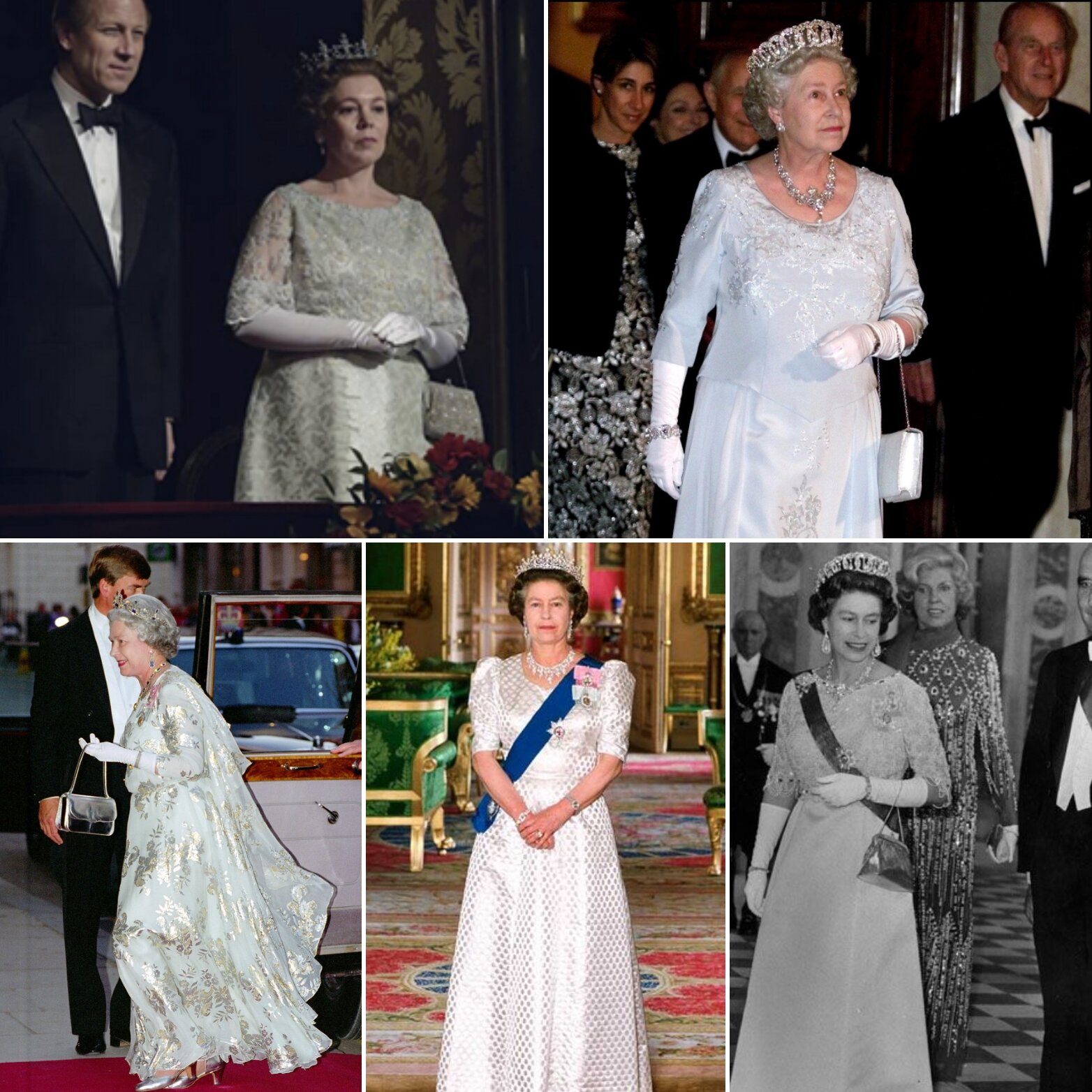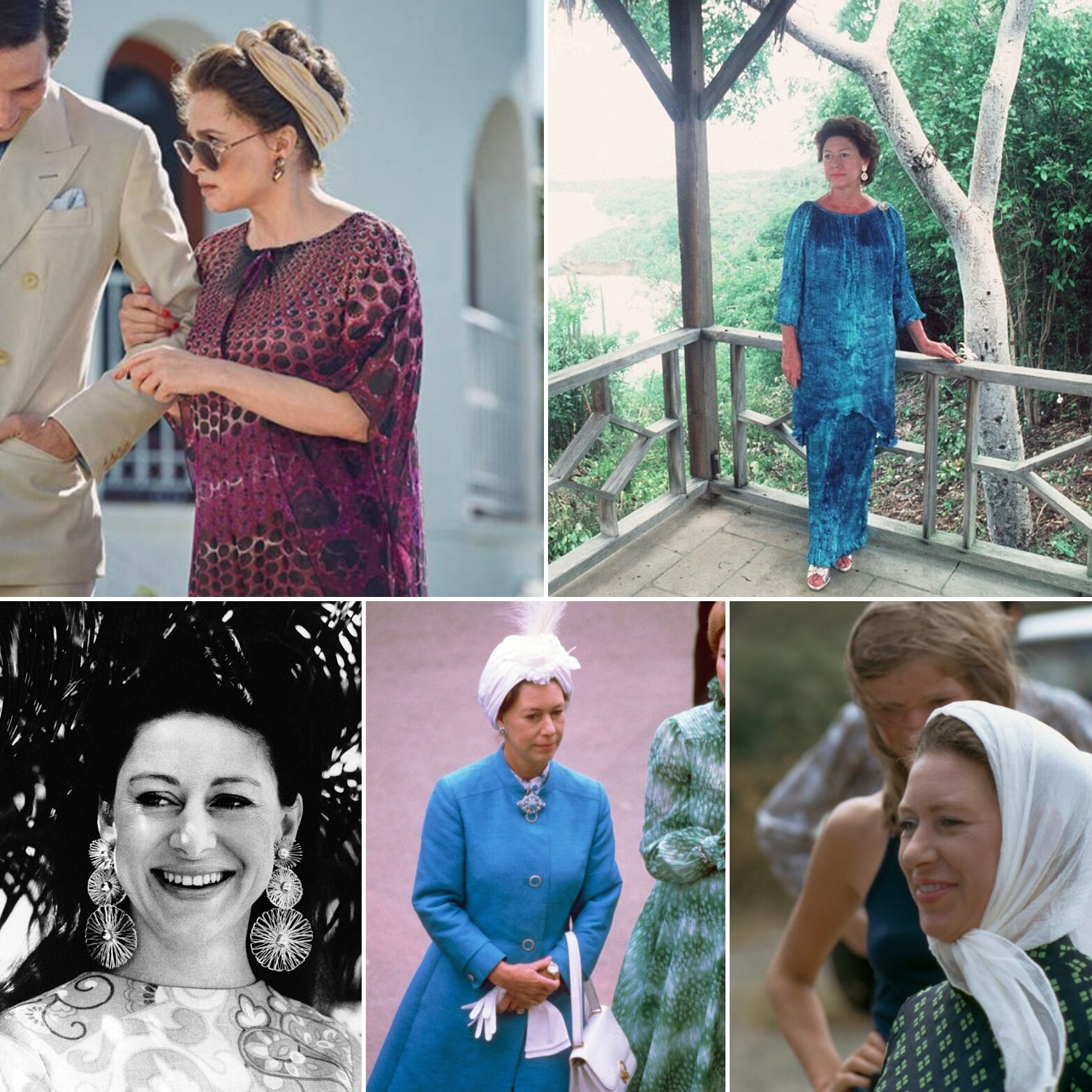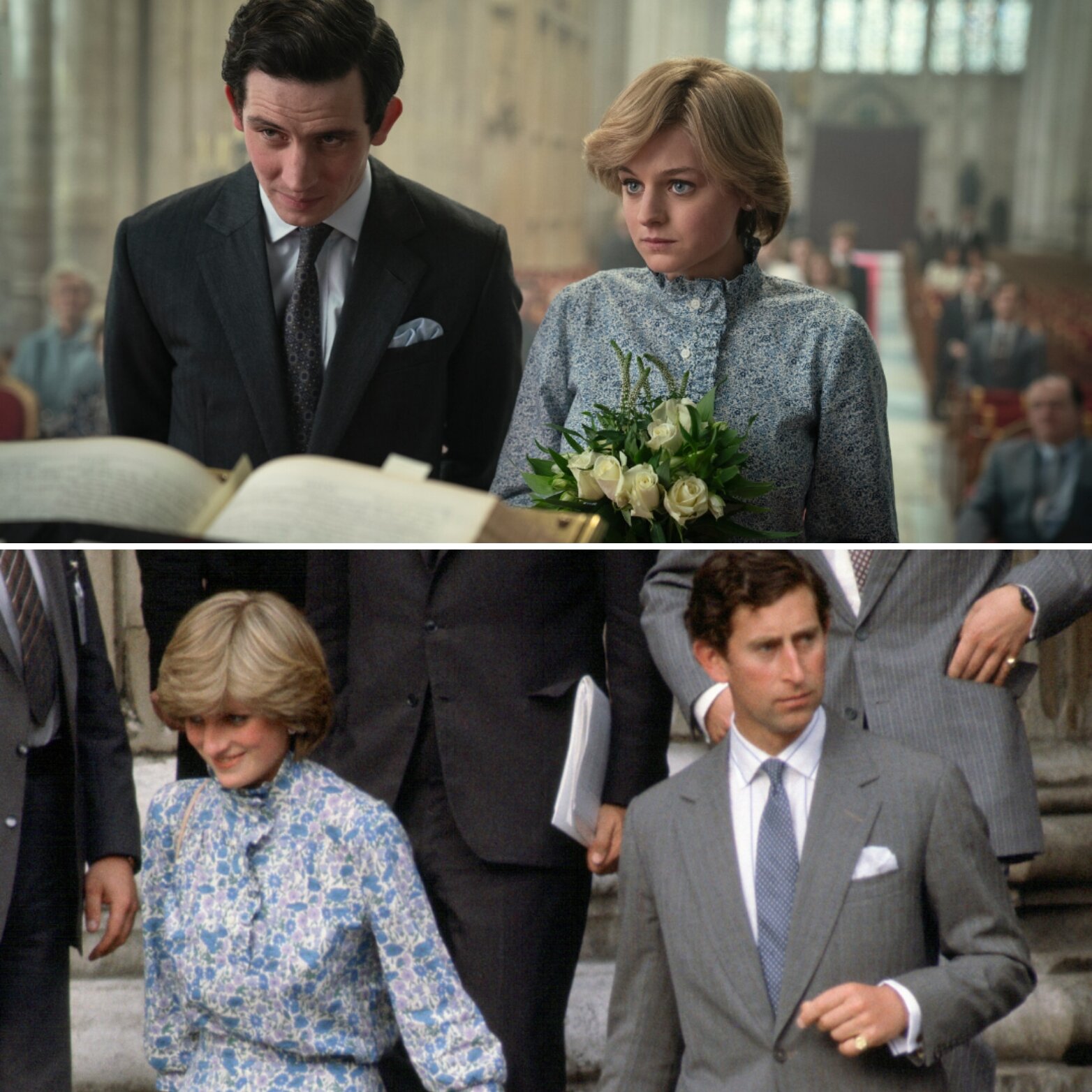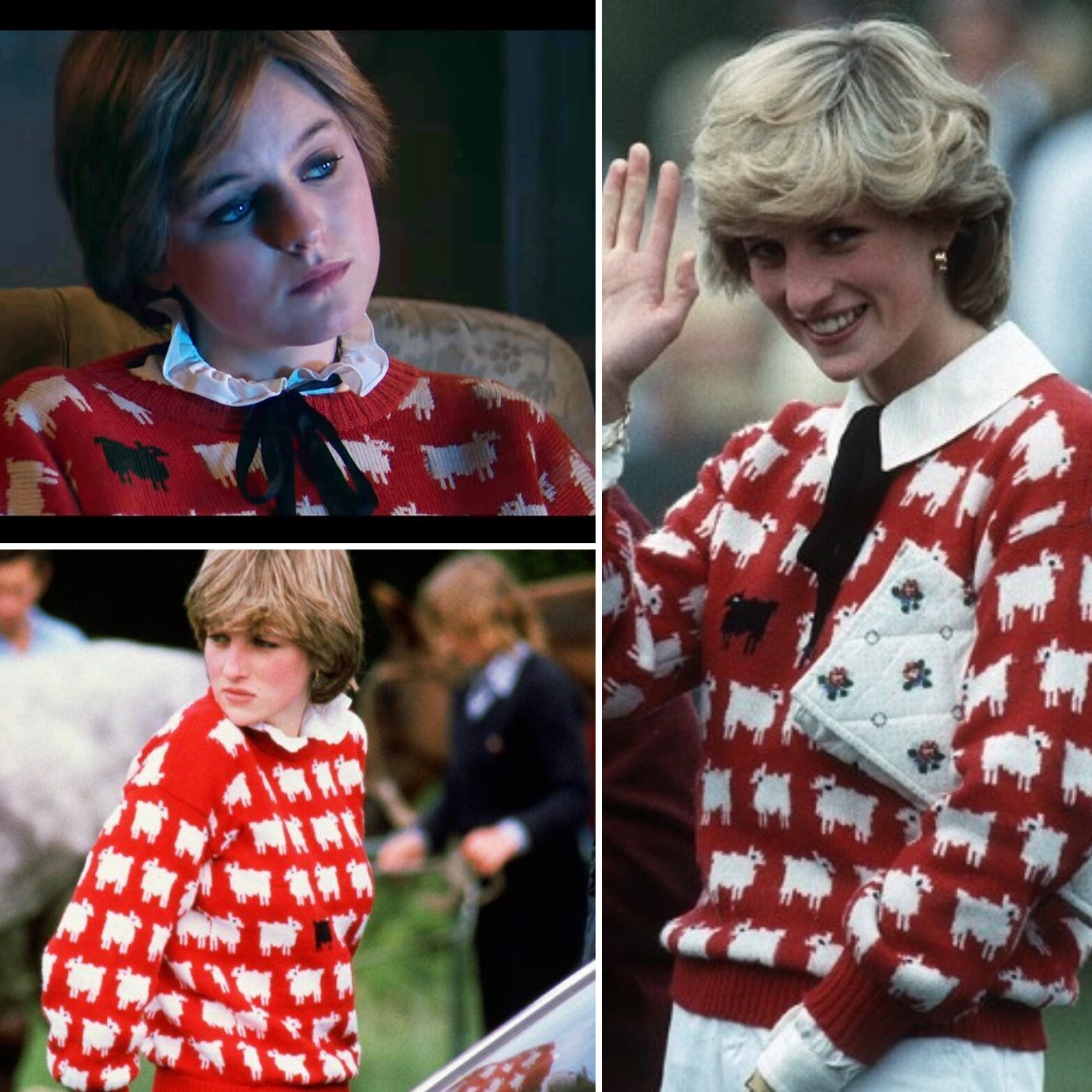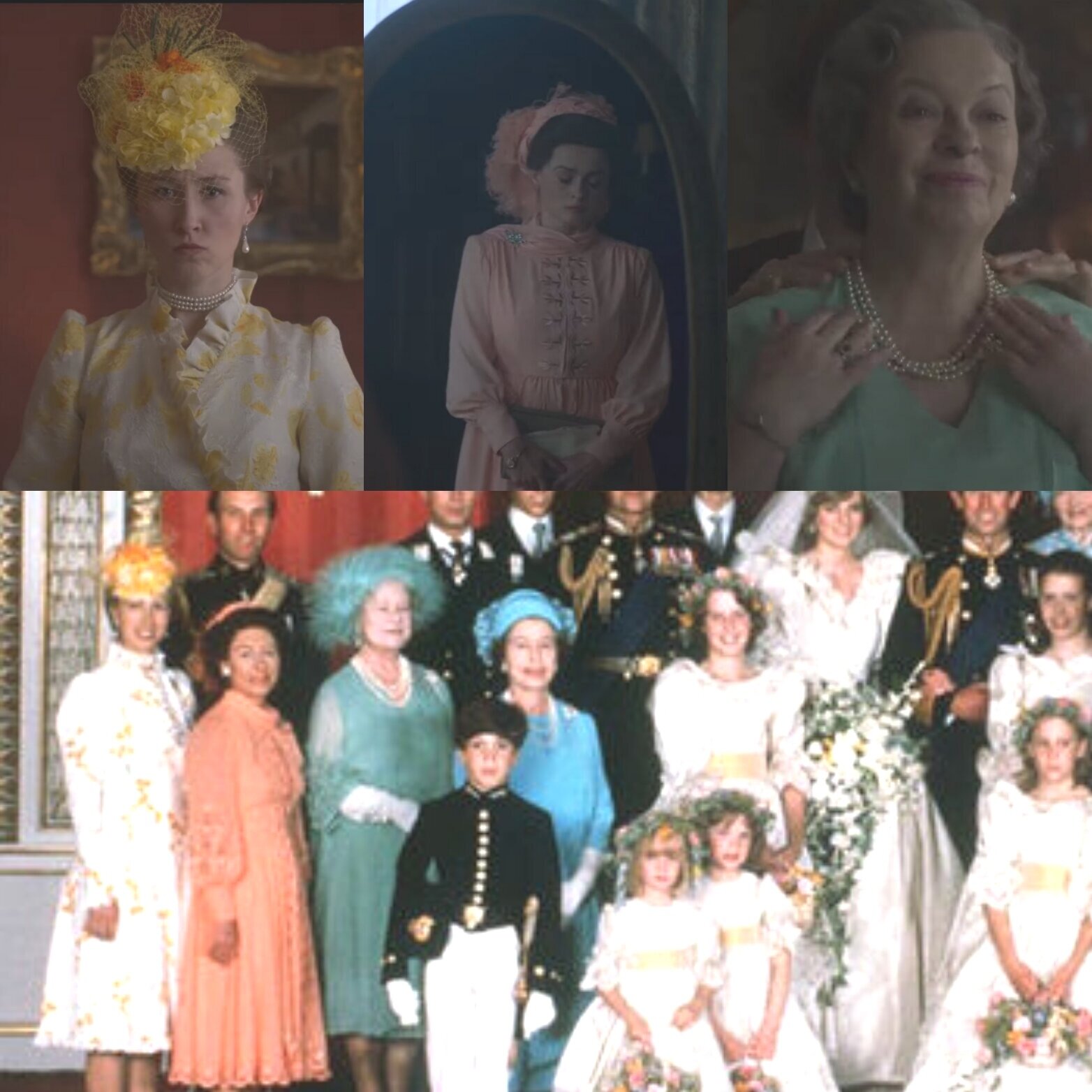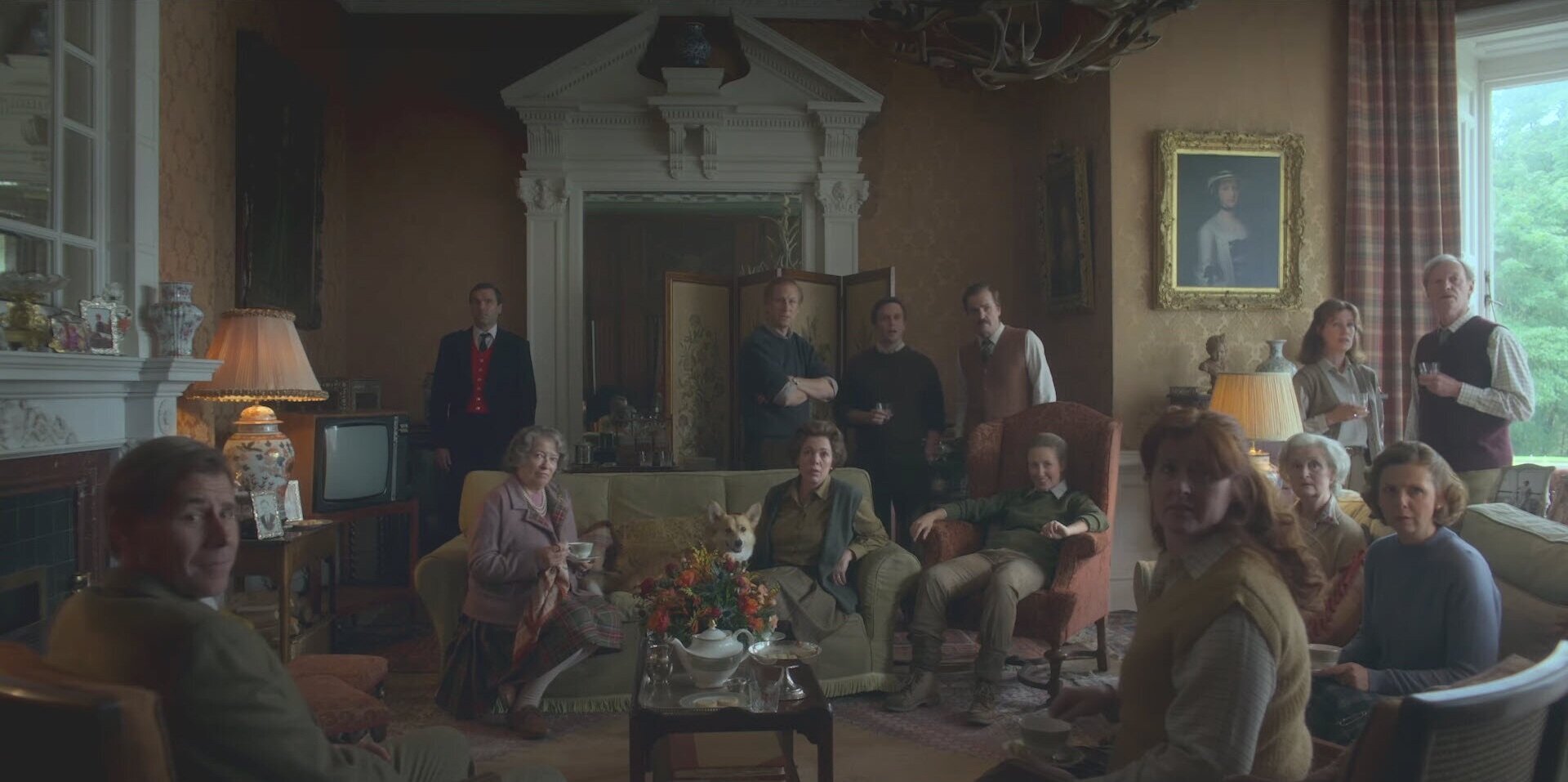The Historical and Shakespearean References in King Charles III
I’m appearing in a virtual production of King Charles III this weekend! I’ve loved this play since I first watched it back in 2017 at the Chicago Shakespeare Theater, and I am so excited to be a part of it.
King Charles III is a 2014 play in blank verse by Mike Bartlett that imagines the accession and reign of the current Prince of Wales to the throne of the United Kingdom. It is highly inspired by Shakespeare and references several modern day events in the UK. The play has appeared on the West End and Broadway and also had a UK tour. It was filmed and broadcasted by BBC Two and Masterpiece in 2017.
Globe Online’s production will take place at 8 PM EST on Friday and Saturday (Jan. 15 and 16, 2021) and at 4 PM EST on Sunday (Jan. 17). Tickets are free and are available at https://globe-online.ticketleap.com/king-charles-iii.
There will be some spoilers for the play throughout this blog post, so if you’d like to avoid those, go get a ticket and come back and read this after you see it!
Historical Characters:
Most of the main characters are real people or are heavily inspired by real people.
I’m not going to list out all the charitable work of every royal on this list, but suffice it to say that they all are very active in a number of different charities and causes.
Charles III at Clarence Brown Theater in 2019 - Charles and Camilla. I love this Camilla costume so much - outfit is clearly inspired by her real life wedding outfit and the tiara clearly echoes the high tiaras Camilla favors.
The real life Camilla and Charles (Credit: Tim Graham).
Charles III -Charles, Prince of Wales and Duke of Cornwall and Rothesay, Queen Elizabeth II’s eldest son. He is currently 72, was created Prince of Wales and Earl of Chester in July 1958, and had his formal investiture as Prince of Wales in July 1969 at Carenarfon Castle in Wales. He is the oldest and longest-serving heir apparent and Prince of Wales in British history. Charles has also taken an increasingly active role in the royal family as his mother has gotten older and often acts for her in various ceremonial roles. He also has been very interested in gardening for decades, which comes up toward the end of the play.
The play shows Charles as having a keen interest in politics and a desire to make his opinions known. This is quite accurate to real life. Charles has been in the habit of writing letters to ministers and politicians on various issues since at least 2004; he states that these are written in his private capacity and do not represent the views of the monarchy. These are sometimes known as the “black spider” memos due to Charles’s handwriting. These have been controversial at times, as the modern British monarch traditionally remains politically neutral. He apparently sticks to party-neutral topics and issues such as the environment, global warming, and architecture, and letters that have been released to the press under freedom of information laws seem to confirm that. The play shows Charles taking a strong stance on press freedom, but I could not find any references to Prince Charles having any particular stances on this issue. He has had a strained relationship with the press at times, due to plenty of negative publicity of himself and Camilla over the years, which is referenced in the play.
There have been some rumors that Charles may not actually go by Charles III when he ascends to the throne due to the issues with the previous two Charleses. Charles I (1625-1649) was tried and executed for treason. Although his son Charles II (1660-1685) was very popular and beloved at the time, he had NUMEROUS affairs and at least 13 illegitimate children with seven different women. Charles II also was king during the great plague of London and the great fire of London. Charles’s representatives have said that no decision has been made on the matter of Charles’s name. He may not choose to go by a different name, as only three English monarchs have actually gone by a regnal name that isn’t their birth name before - Queen Victoria (christened Alexandrina Victoria), Edward VII (christened Albert Edward), and George VI (born Albert) - and he is in his 70s now, and may not wish to go by a different name when he’s been known by his own for so long.
Camilla - Camilla, Duchess of Cornwall and Charles’s second wife. Her relationship with Charles has been very much discussed and dissected over the years, but to sum it up very briefly - they dated in the 70s before her first marriage to Andrew Parker Bowles, they remained close friends, and became romantically involved again in 1986, while Charles was married to his first wife, Diana, Princess of Wales. Camilla and Charles have officially been together since at least 1995 or so (she obtained a divorce from Andrew in 1995 and Charles’s divorce from Diana was formalized in 1996). As Diana was very loved around the world before her death in 1997 and near-beatified afterward, the public viewed their relationship very negatively for quite some time. Charles retained publicists to help reform both his own image and Camilla’s public profile and a multi-year rehabilitation campaign was launched. Camilla made her first official appearance with Charles in 1999, and began making appearances with the Queen in 2001 or so. They became officially engaged in 2005 and married in a civil ceremony later that year.
Although Camilla is legally Princess of Wales, she goes by Duchess of Cornwall to avoid offense, as the “Princess of Wales” title is highly associated with Diana. Upon Charles’s ascension to the throne, Camilla would automatically become queen consort under the law. However, when Charles and Camilla married back in 2005, Charles’s spokespeople at Clarence House stated that Camilla would adopt the title “Princess Consort” in the future instead of “Queen Consort.” No one in the UK has ever gone by this title before, but this appears to refer back to Queen Victoria’s husband, Albert, who was known as the Prince Consort. Spokespeople confirmed in 2020 that Camilla still plans to go by this title, despite continuing rumors that Charles definitively wants to see Camilla crowned as queen. This fact is mentioned in the play actually, toward the end; the script never actually refers to Camilla as queen at all, but instead lists her as Duchess of Cornwall in the character list and stage directions.
Within the play, Camilla basically serves as the protective, supportive wife to Charles, which seems to comport with her actual character quite well.
A 2016 production of Charles III at the Roslyn Packer Theatre in Sydney.
The real life Duchess Kate and Prince William (Credit: WPA Pool).
William - Prince William, Duke of Cambridge is the eldest son of Charles and his first wife, Diana, Princess of Wales. He is second in the line of succession to the British throne and will presumably be made Prince of Wales after Charles’s ascension to the throne. He served in the military in the Blues and Royals, the Royal Navy, and the Royal Air Force and worked for a few years as an air ambulance pilot before stepping down to dedicate more time to his role as a working royal. Like his father, William has become more active in royal ceremonies as the Queen gets older and sometimes hosts investitures on her behalf.
In the play, William is portrayed as initially being very cautious and careful when it comes to his father’s rule as king, clearly not wanting to speak out against his father’s decisions until things get rather dire. He and his wife Kate are shown to have a loving, supportive relationship, but she pushes him to act when he often wishes not to. In a monologue, he notes that his grandmother the Queen specifically advised him that it is often better to wait and rather than act. This comports very well with previous depictions of the Queen in other media and the role of the modern British monarchy.
Kate - refers to Catherine, Duchess of Cambridge. She was born Catherine Middleton to upper middle class parents who founded a successful party supply company and have long standing ties to the British aristocracy and royalty. Catherine met William when they were both students at the University of St. Andrews and began dating in 2003. They married in 2011.
Kate is known to be a very fashionable woman who has inspired numerous trends. Items she wears often tend to sell out quickly, in a phenomenon known as the “Kate Middleton effect.” Her reputation for beauty and fashion are mentioned several times in the play. Her character in the play actually monologues about her dislike at just being known for her fashion and beauty and desire to be respected for her mind. She is portrayed as having a very strong character and as taking her role as future queen very seriously. Some have criticized the play for its portrayal of Kate as a scheming Lady Macbeth character.
William and Kate have three children - George (third in line to the throne, born 2013), Charlotte (fourth in line to the throne, born 2015), and Louis (fifth in line to the throne, born 2018). Although the play originally premiered in April 2014, Charlotte was added into the play at some point, as the script I have definitely mentions her. Louis is not mentioned.
Jess and Harry in the 2017 BBC production
Prince Harry and Duchess Meghan (Credit: Max Mumby).
Harry - Prince Harry, now Duke of Sussex (although he was not a Duke yet when the play was written). He is the second son of Charles and Diana and is sixth in the line of succession to the throne. He served in the military in the Blues and Royals and in the Army Air Corps, notably deploying to Afghanistan on two occasions. In 2014, the launched the Invictus Games, an international sports event featuring wounded, injured, and sick armed services personnel and veterans.
This play is set before Harry’s relationship with his now wife, so she is not mentioned at all. In real life, Harry began a relationship with American actress Meghan Markle in 2016 and married her in 2018. The relationship elicited significant comment and media attention due to Markle’s mixed race identity and divorcee status. Their son Archie Mountbatten-Windsor (seventh in line to the throne) was born in 2019; although he could have been granted the title “Prince” by his grandmother, his parents specifically decided against that and have said they wish to raise him as a private citizen. After significant negative publicity and racist coverage towards Meghan by the British tabloid press, Harry and Meghan decided to step back as senior members of the royal family and become financially independent. They moved to Southern California in Summer 2020. [NOTE: Some people have very strong opinions about Harry and Meghan and may try to quibble with me about whether coverage of Meghan was racist. If you feel that way, I suggest you look at this Buzzfeed article from last year demonstrating how tabloids criticized Meghan for the same actions that they praised Kate Middleton for on many many occasions.]
In the play, Harry is portrayed as being rather aimless. His storyline focuses on his relationship with an anti-monarchist woman named Jess, and the struggles she endures by dating a royal and having her private photos released to the press.
When he meets Jess, Jess asks him if Charles is really his father or if it was “the other one.” This refers to a long standing rumor that Diana’s horse-riding instructor James Hewitt was actually Harry’s father, due to his red hair; Hewitt spoke extensively about his affair with the Princess of Wales to newspapers in the 90s and Diana later confirmed it. In fact, Harry was born two years before the affair occurred. Diana always attributed Harry’s red hair to her side of the family, the Spencers.
Jess Edwards - Jess is an entirely invented character. Although Harry was a bachelor who dated different women before ultimately meeting Meghan and marrying her, Jess doesn’t seem to be inspired by any particular woman he dated.
Much has also been made of the fact previously that a few events in this play seem to have predicted in real life. In the play, Harry falls for a non-noble woman named Jess with republican, anti-monarchy views, and even threatens to leave his role as prince for her after previous compromising photos of her are made public and the media attacks her. Jess’s appearance is not described in the play, but she has been played by a black actress on multiple occasions. In real life, Harry married an American woman of mixed race, Meghan Markle. Before their marriage, Meghan acted in the long running TV series Suits and played a character who actually had a number of sex scenes. Although she hasn’t been given any flack for that that I’m aware of, the media has actually been so rotten to her at times that she and Harry have left their roles as working royals to live private lives in California.
James Reiss - Press advisor for the palace, who’s worked for Charles for 30 years. This is an invented character who is meant to represent the fact that many of those closest to the royal family really have worked for them for many years (although I don’t think 30 years is terribly usual). Within the play, he’s the very traditional royal family staffer, who repeatedly refuses to help Jess with her issues with the media and encourages her to stop seeing Prince Harry to protect Harry’s reputation. He also plays a key role in helping William ambush his father with his plan to serve as mediator between the king and Parliament (at a press conference with no warning to Charles).
In real life, the person with this job description is now known as “Communications secretary to the prince of wales and duchess of Cornwall.” The current communications secretary for Prince Charles is Julian Payne, who has worked for him since 2016. He previously worked in media relations and communications for Burberry and the BBC.
Prime Minister Tristan Evans and Leader of the Opposition Stevens - These characters appear to be invented for the story. Evans is stated to be from the Labour party and Stevens is from the Conservative (Tory) party. I couldn’t find any records indicating that they were based on any particular elected leaders. I admittedly do not follow UK politics that closely so if anyone knows different, please let me know.
Ghost of Diana - The play features a ghost who is eventually revealed to be Diana, Prince Charles’s first wife, who died tragically in 1997. She had a rather eventful life, but to make things brief, she married Prince Charles in 1981 when she was barely 20 and he was 33, was apparently a fantastic mother to William and Harry even as her marriage to Charles broke down irretrievably, battled a number of medical issues including bulimia and depression, and worked hard for various charitable and humanitarian causes throughout her life. Although divorce hadn’t been previously allowed for royals, Diana and Charles were allowed to separate in 1991 after their marriage troubles and extramarital affairs were made public and eventually were allowed to divorce in 1996. She died in a car crash in August 1997 in Paris, France, along with her partner Dodi Fayed and the driver of the car. Her death caused an international outcry of mourning that took many by surprise.
Historical Events Referenced: [SO MANY SPOILERS HERE. If you don’t want to be spoiled, turn back now.]
News International Phone Hacking Scandal - In the play, parliament has passed a bill restricting the freedom of the press. It is never specified exactly what this bill does, but Charles at one point says “Not since the news was born, has government and state teen there allowed to use the threat of jail to stop the presses, based on what they deem is unacceptable.” This was inspired by the News International Phone Hacking Scandal, which was very complicated and took many years to fully investigate and sort out. In short, from 2005-2007, a newspaper called The News of the World (owned by News International) hacked the phones of numerous celebrities, politicians, royal family members, and even murder victims. Prince William actually played a role in the situation when the newspaper broke a specific story about him; as William knew that only two other people in the world knew about his plans prior to the story breaking, he concluded that his voicemail accounts had been hacked. The entire situation caused a huge outcry and led to numerous investigations by the Press Complaints Commission (more on that in a second), the Metropolitan Police Service, Scotland Yard, and Parliament (the impetus behind a few of these investigations was The Guardian’s excellent reporting on the hacking scandal). Numerous celebrities filed breach of privacy cases against News International. The News of the World ended up folding in 2011 after several of its advertisers pulled out; many executives and senior employees at News International also resigned as more and more information came out. By the end of it all, over 100 people were arrested for illegally acquiring confidential information. 32 were charged with and 14 were convicted of various crimes.
The play also has a line in which the prime minister notes that the press wasn’t capable of regulating itself. This appears to refer to the Press Complaints Commission, a voluntary press organization which was intended to investigate complaints about the press. Although PCC had no legal authority, the newspapers and magazines in the UK contributed to its costs, followed its rules, and agreed to abide by its rulings. The PCC was criticized heavily for its inadequate response to the phone hacking scandal. It disbanded in 2014 and was replaced by the Independent Press Standards Organization, which appears to be set up in a similar manner, although there are several newspapers that have refused to join it.
Princess Diana’s death - Early on in the play, the prime minister tells Charles “What of the pack of wolves that mercilessly did hunt to death your late and much-missed wife?”, referring to Diana’s tragic death in 1997. This refers to the long-standing narrative that Princess Diana’s death was caused by an invasive press pursuing her car. However, this is not the full story. The extensive UK inquest into the car accident found in 2008 that Diana and Dodi’s deaths were due to the gross negligence of the following paparazzi AND the driver. The driver’s blood alcohol content was three times the legal limit, had taken two prescription medicines that caused drowsiness when combined with alcohol, and was driving over twice the speed limit of the tunnel immediately before the accident. Numerous photographers were chasing the vehicle on motorcycles at the time. (Source: National Archives, BBC News) In addition, the occupants of the car were not wearing their seatbelts at the time of the crash.
Nine photographers were charged with manslaughter in France but the charges were dropped in 2002. Three photographers who photographed the aftermath of the crash were tried for invasion of privacy but were acquitted in 2003. The paparazzi photos of the crash were confiscated and not published. (Source: CBS News)
The “assassination attempt” on the queen - At one point in the play, Charles refers to an attack on his mother in 1981, when a teenager fired six blank shots at the queen as she rode down the mall to the trouping the colors ceremony. The shots startled the Queen’s horse, but she brought it under control quickly and proceeded with the ceremony. The teenager spent three years in a psychiatric prison. (Source: Biography)
Refusing Royal Assent to a Bill - Within this play, Charles both refuses to grant royal assent of a bill. There are no rules specifically saying the sovereign cannot do this, but by tradition, the sovereign generally does not. Royal assent is generally considered a formality these days; it’s the last step before a bill becomes a law.
The last time a sovereign refused to grant royal assent to a bill was in 1708, when Queen Anne refused to sign the Scottish Militia Bill; her predecessor King William III had vetoed bills six times.
Dissolving Parliament - Charles III also dissolves parliament without parliament’s consent in the play. These days, after the Fixed-term Parliaments Act 2011, the UK Parliament is dissolved 25 working days before a polling day (election day). Parliament was first dissolved automatically in 2015; previously, parliament was always dissolved by royal proclamation, and almost always at the explicit request of the government to the monarch. Despite the changes in the law though, it appears that the monarch retains the power to dissolve parliament (Source: Fixed-term Parliaments Act 2011 6(1)).
In practice, the last time a sovereign dissolved parliament without parliament’s request or consent was when King William IV dissolved it in 1830, and even then, it appears that that was…kind of actually at the request of the prime minister. (If i’m wrong, let me know. Again - I’m American, I don’t know British parliamentary history or practice all that well and am just doing my own research to try to explain things here).
Abdication - At the end of the play, William forces his father to abdicate for the good of the kingdom. The last king to abdicate and only English sovereign to ever abdicate willingly was Edward VIII in 1938, when it became apparent that he could not marry the twice divorced American Wallis Simpson and remain on the throne. Richard II was forced to abdicate in 1399 and James II likely abdicated when he fled to France in 1688 (although that’s a fine point still somewhat debated today).
Historical Setting: The time of the play and ages of the characters are never specified explicitly. However, at one point, Charles states “my mother ruled for seventy years.” Elizabeth has ruled almost 69 years at this point and will reach her 70th year in early February 2022. Although Charles certainly could be talking in approximations and not exact numbers, that sets the time period of the show as around 2022-ish.
Most of the scenes in the play do not actually specify a location setting, but here are the ones that do.
Boujis - Harry and Jess meet at Boujis nightclub in one scene. This nightclub in South Kensington, London, was indeed a favorite of both Prince William and Harry in their bachelor days. Boujis is less than two miles from Kensington Palace. William and Harry grew up in Kensington Palace and have both lived there off and on throughout their adult years.
10 Downing Street - The headquarters of the UK government and the official residence and office of the Prime Minister. People regularly use “Downing Street” to refer to the workings of the prime minister’s office in general (similar to how “the White House” is used in the United States).
Buckingham Palace - The monarch’s London residence and the administrative headquarters of the UK monarchy. It is located in the city of Westminster within London. The monarch has numerous other residences, but this is the principal one. “Buckingham Palace” is often used to refer to the workings of the monarch’s office and staffers.
It was originally known as Buckingham House, as it began as a large townhouse built for the Duke of Buckingham in 1703. King George III acquired it in 1761 for Queen Charlotte. It was enlarged considerably and later became the London residence of Queen Victoria in 1837. All the UK monarchs have lived there at least some of the time ever since.
Kensington Palace - A royal residence in South Kensington, London. William and Harry grew up there in apartments initially shared by Prince Charles and Princess Diana. Diana still had apartments at Kensington even after her divorce from the Prince of Wales. Prince William and Duchess Catherine’s family currently lives in apartments there and Harry has lived there off and on throughout his adult life. Several other royal family members currently live there as well. In addition, historic parts of the palace are open to the public (or at least were before the COVID-19 pandemic).
Kensington Palace was originally just a two story mansion dating back to 1605. King William and Queen Mary bought the house in 1689 and then expanded it significantly. Various royals have lived there ever since.
House of Parliament - This specifically refers to the hall in which the House of Commons meets within the Palace of Westminster. The Elizabeth Tower in the palace of Westminster is one of the most recognized buildings in the UK (and maybe even the world) today, although it is generally referred to as “Big Ben,” which is actually the name of the main bell in the clock tower. “Westminster” also is used to refer to the UK Parliament and government.
The current Palace of Westminster was rebuilt from 1840-1870 after a fire burnt it down. It’s burnt down and been rebuilt a few times, but the first royal palace constructed on the site dates back to the 11th century.
Westminster Abbey - The historic location in which English and British monarchs have been crowned since the coronation of William the Conqueror in 1066. Westminster Abbey is also commonly used for royal weddings and funerals. Many significant people are buried at the abbey, including 16 monarchs, 8 prime ministers, various literary figures, military leaders, and the unknown warrior.
Tradition has it that a church was first founded at the site back in the seventh century. King Henry III ordered construction of the current abbey building in 1245, although some sections have been rebuilt and altered.
Shakespearean References:
As I mentioned in the introduction, the play is written in blank verse (often Iambic Pentameter but not always). Blank verse poetry adhere to a specific rhythmic structure of stressed and unstressed syllables.
Mike Bartlett has been very vocal about the Shakespearean inspiration for his play, and told the New York Times back in 2015 - ““I realized that the best way to tell the story was to make Charles a Shakespearean tragic hero. The idea that he’s waited all his life to do a job that he would have for only a short while felt really Shakespearean.”
Charles in the 2015 production of King Charles III at the Music Box Theatre.
The deposition scene from the Hollow Crown production of Richard II.
Several of the characters’ dialogue and story arcs resemble Shakespearean characters:
Richard II and his wife - Charles and Camilla
In Richard II, Henry Bolingbroke leads a rebellion to over throw Richard II after some…very poor choices by the king. It famously features a scene in which Bolingbroke deposes Richard by forcing him to abdicate the crown to him in full view of the court. Richard monologues quite dramatically about losing his crown, land, kingship, and identity before eventually, reluctantly, giving his crown to Bolingbroke (who becomes Henry IV). This deposition scene was quite controversial at the time, as it could be read to comment on the succession debate around the aging and childless Elizabeth I, and was left out of a few printed editions of the play; this may have been due to censorship from the playhouse or the master of revels, but there’s no actual evidence to back this hypothesis up. Just before Robert Devereaux, Earl of Essex rebelled against Elizabeth, some of his supporters paid for a performance of Richard II at the Globe. There’s a rather famous anecdote (of dubious source) that Elizabeth at one point remarked “I am Richard II, know ye not that?” to her archivist.
Similarly, towards the end of the play, William tells his father that with all the harm he’s caused with his actions as king, he must abdicate. Charles fights this idea ferociously, just like Richard II, but William tells him that if he doesn’t abdicate, his family will refuse to see him. Charles ultimately gives in and agrees to abdicate. In the process, he muses about his own identity as “the greatest king” (as the ghost foretold earlier in the play) and who he will be after he abdicates. In the final coronation scene, he lifts the crown off the cushion without warning and contemplates it. He ultimately crowns his son with it. Several speeches throughout the play echo and almost paraphrase lines from Richard II.
Camilla’s role in the show is restricted to her interactions with and support of the king. This puts her in a very similar position as the unnamed Queen in Richard II, who is limited to the domestic world and her interactions with her husband. Neither characters are shown to be particularly politically savvy either.King Lear - Charles
In King Lear, the king bequeaths his power and land to the two of his daughters who are willing to flatter him and is later furious when they do not treat him with the respect he feels he deserves. He ends up wandering off alone and mad on the heath. His story does not end happily for him or for the one daughter who was actually honest and good.
In the abdication forcing scene in Charles III, Charles very angrily speaks of William and Kate’s treachery toward him. When Harry shows up, Charles goes to him for support and clearly expects it; Harry tells him that he supports William. William then states that if he does not abdicate, none of his family will see him any more (which truly would leave him relatively alone). After he abdicates, Charles states, “I will retreat to bed, and when I wake To a new dawn, I’ll simply be an old Forgotten gardener, who potters round And talks to plants and chuckles to himself,” reducing himself to an old and eccentric man in his gardens, like Lear on the heath.
Kate in the 2017 BBC production
An 1888 photo of Ellen Terry playing Lady Macbeth
Macbeth and Lady Macbeth from the Victorian Illustrated Shakespeare (1864-1868)
Macbeth and Lady Macbeth - Prince William and Kate Middleton
In Macbeth, Macbeth has the title and power, but Lady Macbeth has the drive, intelligence, and ambition to push him to be greater than he initially aimed for. From the very first appearance of Lady M, she’s plotting and scheming.
Similarly, throughout the play, Prince William, born to be the future monarch, refuses to act against his father until late in the play, espousing his desire to wait and see what happens. Kate urges William numerous times to take action and even invites politicians to their home to discuss the situation with them. In stark contrast to Lady M though, Kate seems to be primarily driven by the good of the country, of which she will someday be queen.
Hamlet and his father’s ghost, “The Works of Shakspere” 1846. John Orrin Smith.
The witches in Macbeth. 1785, John Raphael Smith.
Hamlet Senior’s Ghost/the Witches in Macbeth - Diana’s Ghost
In Hamlet, the plot really gets off to a start when Hamlet’s dead father speaks to him about his foul murder. Before Hamlet speaks to the spirit, it has appeared numerous times to other people.
In Macbeth, the witches prophesy Macbeth’s future as king and various other plot points in the show. It’s very unclear in Macbeth whether the events in the play would have occurred if not for the witches’ intervention; several of their prophecies are true, but phrased in such a way to give Macbeth false hope about his staying on the throne. In his final scenes, he’s still clinging to those prophesies as his world falls apart about him.
The ghost of Diana is a dead family member of the characters she appears to. She appears in passing a few times before she actually speaks to anyone, just as in Hamlet. However, like the witches in Macbeth, her prophesies are true but double-edged. She mysteriously implies that Charles “will be the greatest King we ever had,” but later directly tells William “You’ll be the greatest king we ever had.” Later in the play, Charles defends himself against William by saying, “I know, don’t ask me how, that I will be the greatest king of all.” William turns this rhetoric on him by saying that history books will describe him as the king who selflessly stood down and passed the crown “to younger hands, more popular and with more time to reign” (note: this outcome also refers to the fact that there have been public suggestions that the crown should pass Charles entirely and go to William for years, due not in small part to his own actions while married to Diana).
In addition, the play ends with the crowd saying “God save the king” to the now crowned William. This resembles the closing scene of Macbeth, in which Malcolm is hailed as the new king of Scotland immediately after the defeat of Macbeth in battle.
Charles III and Jess at the 2017 production of King Charles III at Shakespeare Theatre Center (Washington, DC).
Hal (newly Henry V) rejects Falstaff in the Hollow Crown production of Henry IV Part II.
Hal (Henry IV Part 1 and 2) - Prince Harry
In Henry IV Part 1, young prince Hal (a nickname for his actual name, Henry) spends time in taverns and hanging out with his friends, most notably, the drunken and corrupt Sir John Falstaff (who despite everything is very fun to hang out with). Hal’s father the king despairs of his son ever being ready for the throne, but Hal reveals to the audience that he actually plans to quickly show himself worthy to his father and others with some noble exploits; he believes the sudden change of manner from riotous youth to noble prince will earn him more respect. As the play and its sequel Henry IV Part 2 goes on, Hal does indeed take on more and more responsibility and performs worthy deeds. He ultimately is crowned king at the end of Henry IV Part 2. Falstaff tries to get the attention of his old friend, now that he’s king, but Hal pretends not to know who he is and rejects him.
In Charles III, Prince Harry (whose birth name is also Henry) spends time in clubs with his friends and seems initially aimless. His father and stepmother somewhat despair of him. He meets and falls in love with Jess and even considers leaving the royal family for her. However, at the end of the play, right before his brother’s coronation, Harry rejects Jess and says he must give her up in order to support his brother the king. His entire arc is incredibly similar to Hal’s. The only big difference is that Harry won’t be inheriting the throne and doesn’t expect to have to wield the power of kingship at any point.
I hope y’all enjoyed the post! As mentioned at the beginning, Globe Online’s production of King Charles III will take place at 8 PM EST on Friday and Saturday (Jan. 15 and 16, 2021) and at 4 PM EST on Sunday (Jan. 17). Tickets are free and are available at https://globe-online.ticketleap.com/king-charles-iii. If you end up going as a result of this blog post, please let me know! It would delight me to no end.

























